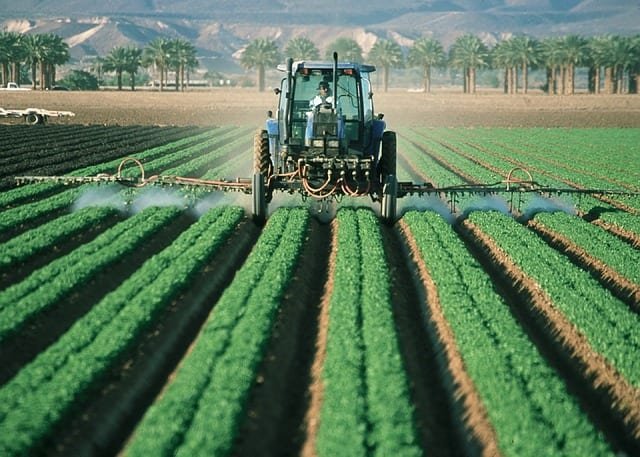
Agriculture offers us food and livelihoods for our benefits and income. Over many years, the improvements in farming strategies and technology have shown an amazing change in boosting agricultural productivity. These technological wonders that revolutionised farming practices are the modern-day tractors. In this context, you will get to know the impact of modern-day tractors on Indian agriculture, how they have improved the farming tasks and the fantastic improvements they’ve brought to our country.
Why do farmers switch to modern machines?
Farmers throughout the world are choosing current machines more and more to make it easy for their agricultural practices and to overcome the modern challenges. One of the primary purposes for this shift is the enormous growth in efficiency and productivity that modern machines provide. Compared to manual labour and traditional methods, these machines, prepared with advanced technologies, significantly reduce the time and effort required for a number of farming tasks.
The want for cost-effectiveness likewise drives the adoption of cutting-edge machines. While the initial investment may be better, the long-term advantages in terms of improved yields, reduced labour expenses, and minimised useful resource wastage make it a financially affordable need for farmers. Additionally, the versatility of cutting-edge machines allows farmers to perform a couple of tasks with a single machine, saving time and resources.
Moreover, the global demand for food has risen, necessitating better manufacturing levels. Modern machines, with their precision farming abilities and potential to deal with large-scale activities, enable farmers to fulfil their needs properly. The need for sustainability and environmental focus is another concern, as advanced machines like AC tractors often provide eco-friendly alternatives, contributing to extra sustainable agricultural practices. The Ac tractor price in india starts from Rs. 10 lakhs. In essence, the change to trendy machines represents a strategic flow by farmers and advanced machines to beautify efficiency, reduce costs, and meet the evolving needs of the agricultural view.
Benefits of Modern Tractors:
1. Increased Efficiency:
Modern tractors have significantly improved the efficiency of farming operations. With effective engines and advanced capabilities, tractors can plough large fields in a fraction of the time it’d take the use of traditional strategies. This increased performance allows farmers to maximise their output and yields.
2. Time-Saving:
Time is very important for farmers during the hard tasks like planting and harvesting seasons. Modern tractors, equipped with modern mechanisms, enable farmers to complete tasks in a shorter time frame. This now not only effectively reduces the workload but also offers farmers greater time for other important tasks.
3. Precision Farming:
Modern tractors are enhanced with advanced farming technologies, which allow farmers to maintain the proper management of water, fertilizers, and pesticides being used. This not only minimises resource wastage but also improves the crop yield and first-class.
4. Versatility:
The modern tractors are versatile machines. These tractors help to perform different tasks in the fields. They can be attached with various attachments like a plough for ploughing, a seed drill for seeding, a cultivator for cultivating, a rotavator for levelling the land and a harvester for harvesting. This versatility lets farmers conform to exceptional vegetation and activity situations effortlessly.
5. Ease of Operation:
Modern tractors are designed with user-friendly functions, making them handy even to farmers with limited technical knowledge. This ease of operation ensures that tractors may be used correctly by a large view of farmers across the country.
Impact on Rural Economy:
The full-size adoption of modern tractors has had an amazing effect on India’s agricultural economic system. Increased agricultural productivity translates to better incomes for farmers, mainly due to modern living standards in rural communities. The mechanisation of farming has also created process possibilities in manufacturing and renovation and helped offerings related to tractors.
Challenges and Solutions:
While the benefits of modern-day tractors are obvious, challenges, which include high initial costs and the want for proper education, nonetheless exist. To cope with these problems, government tasks and guide programs can play an important role in providing subsidies for tractor purchases and organising knowledge camps for farmers. Collaborative efforts among the authorities and personal quarters can similarly beautify the accessibility of current tractor technology to both small and marginal farmers.
Environmental Impact:
The environmental impact of cutting-edge tractors is an important consideration. While the performance of tractors has increased, it is essential to be conscious of sustainable farming practices. Encouraging the use of green fuels, promoting organic farming, and incorporating precision farming techniques can help to lower the environmental effect of modern-day agriculture.
Conclusion:
In the end, the combination of modern tractors in Indian agriculture has been a game-changer. From improving performance and productiveness to uplifting the rural economic system, these machines have played an important role in taking our country’s agriculture to new heights. However, it is hard to approach this technological advancement with a holistic angle, thinking about environmental sustainability and the inclusivity of small-scale farmers. As we continue to improve modernisation in agriculture, we can ensure that the benefits attained in each sector of our country which contribute to India’s overall growth and prosperity.


